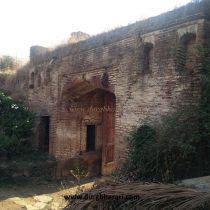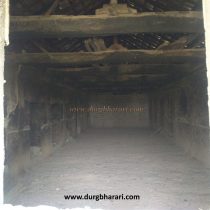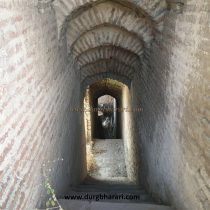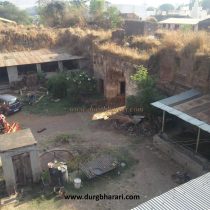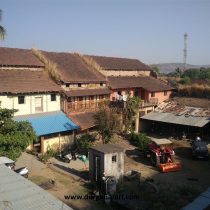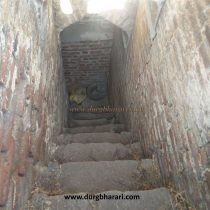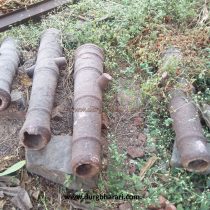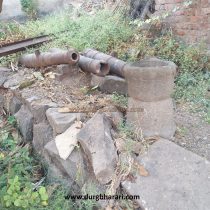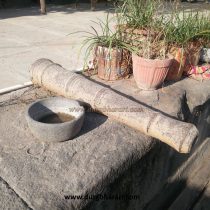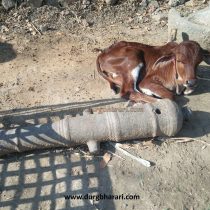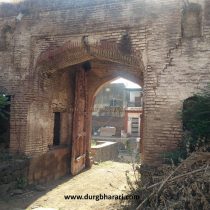CHAAS
TYPE : GADHI
DISTRICT : PUNE
Forts in Maharashtra is an intimate subject of Marathi people. Marathi people feel affection for the forts here. But with the passage of time, many of the forts faded away and some fell into oblivion. Today we will visit one such forgotten fort at Chas. Chas means place of residing before marriage of Kashibai, wife of Bajirao Peshwa. The wada where Kashibai spent her childhood in this Chas village is “Mahadji Krishnaji Joshi Chaskar's Chauburji Gadhi” in Chas village. As many Sardar joined Tarabai party in the dispute between Chhatrapati Shahumharaj and Tara Rani and many rebelled, Shahu Maharaj felt the need for an army and Balaji Vishwanath as a military man was responsible for this. At this time, Baramatikar Naik Savkar and Chaskar Joshi Savkar provided financial support to Balaji Vishwanath for building an army.
...
As a reward for this favour, Balaji Vishwanath established close relations with both these families. His eldest son Vishwanath alias Bajirao was married to Ladubai alias Kashibai, daughter of Mahadji Krishnaji Joshi Chaskar. Mahadji Krishnaji Joshi Chaskar was a moneylender in the past. Apart from the fort in Chas village, Chaskar Joshi Savkar also had another wada (mansion) at Sate in Vadgaon Maval. Chas village is located at a distance of 10 km from Rajgurunagar on the Rajgurunagar-Bhimashankar road. One can easily visit this fort while visiting Bhimashankar or Bhorgiri fort. The fort is rectangular in shape with an east-facing entrance, spread over an area of five acres in the east-west direction. The main entrance of the fort is made of stone and the upper part is decorated with bricks. Apart from this door, there is another small door in the northern part of the fort which is currently closed as it is not in use. There are four bastions at the four ends of the fort and the ramparts is about 20 feet high and 8 feet wide. The ramparts of the fort are still intact. Before entering the fort, a lime grinding wheel can be seen in front of the door. The wooden door frame and the iron bars on it are still there and inside the door there are guard rooms on both sides. There is a stairway leading to the rampart from one of these rooms. Chaskar Joshi's three-storied mansion inside the fort still remains today and his descendants live there. And after telling that they have come to see the wada, they show the wada with equal affection. There are steps from three places to reach the ramparts. Adjacent to the outer rampart, the inner structure has completely collapsed and brick-built niches, doors and windows and wall latrines can be seen in this rampart. Four cannons are lined up in a square foundation on the inside of the door while two cannons are seen lying elsewhere. A large number of stone objects can be seen while walking around the fort. The wall inside the main wada has stairs leading to the upper floors and the wall contains granaries. There is a cellar under the shed and a staircase leading in through a hatch in the wall. The second floor of the wada is still used for living and the third floor is a spacious auditorium. Apart from this, the wooden shrine in the wada is amazing and has very beautiful idols. Although the Joshi family shows the mansion with love, being a residential house, there are some restrictions on our movement. There is a deep well behind the wada and its water is still being used today. Joshi said that the second well in the wada was extinguished a few years ago. There are no signs of fights taken place in previous times in the ramparts of the fort, so the ramparts may have been built only for the defence of the fort, but this does not match to the cannons seen in the fort. One hour is enough to visit the entire wada and ramparts. Chas village in Khed taluka of Pune district is the stronghold of Joshi, wife of Kashibai, the first wife of Peshwa Bajirao Ballal, a brave general of the Maratha Empire. Chas village is 10 km from Rajgurunagar on Pune Nasik highway. This village is near Chasakman Dam. This fort is in the middle of the village. The entrance to the fort is stone and grand. Lotus flowers are engraved on it. The stones on the ramparts are gone but the soil remains. The ramparts and bastions of the fort are in a dilapidated condition. There are 3 separate wada inside the fort. There are 4-5 cannons inside. The wada has wooden beams, majghar, and elephant with brass ambari. Currently, this is the eleventh generation of Chaskars. Krishnajipant Joshi Chaskar originally came to Pune from Kasbe Murud Dabhol, village Talsur. He received the right of potnis from Shivaji Maharaj. Krishnajipant was working in Hindu Swaraj in Kolhapur, Pune, and Satara. His sons Naro Krishna, Govind Krishna, Mahadaji Krishna, three brothers must have done something special during the reign of Sambhaji Maharaj and Rajaram Maharaj. In 1695, there is a mention that Rajaram Maharaja gave the gift deed of Pali village through Mauje Khavali. Mahadjipant had the area of Khandesh, Yagalan, Junnar, Kalyan, and Pune. It is said in Chaskar Joshi's genealogy that Balaji Vishwanath received the Peshwa's robes on his recommendation. It is also mentioned in the clan records that all the three brothers did special work in the siege of Jinji during the reign of Chhatrapati Rajaram Maharaja. Balaji Vishwanath's debt was settled by Mahadaji. A few days later, Balaji Vishwanath demanded Mahadaji's daughter Ladubai alias Tai for his son Bajirao. Shahu Maharaj intervened in this work. That’s why this marriage was successfully carried out. This marriage ceremony took place in 1711 AD at Kalyan. Ladubai was named Kashibai later after her marriage.
© Suresh Nimbalkar

